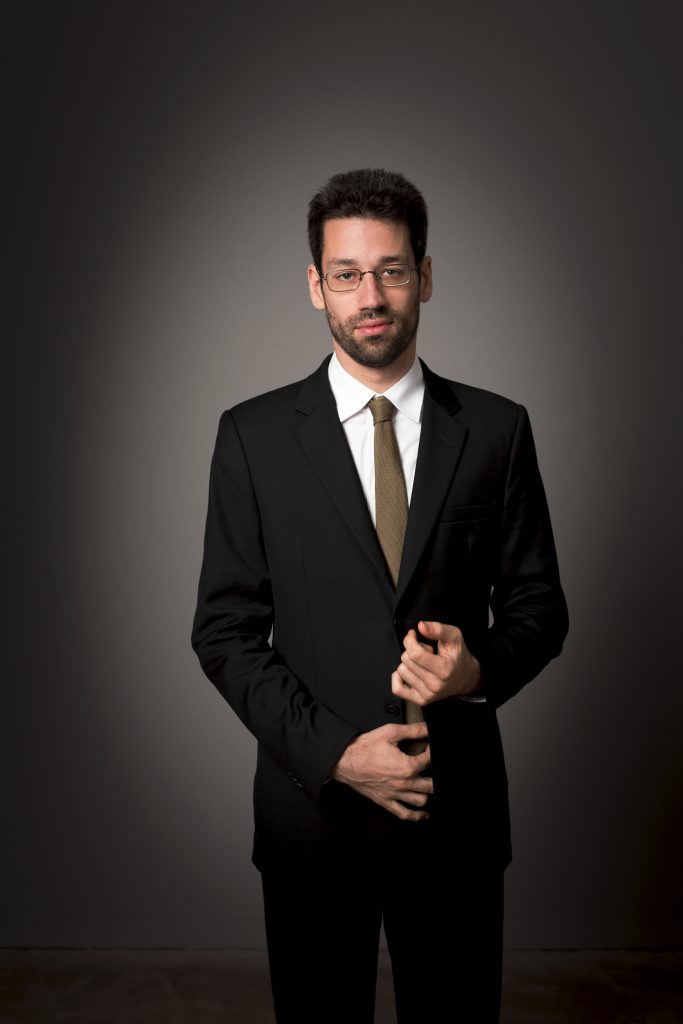Biss’s Beethoven proves a highlight with Harth-Bedoya, DSO

Jonathan BIss performed Beethoven’s Piano Concerto No. 2 with the Dallas Symphony Orchestra Thursday night. Photo: Benjamin Ealovega
Beethoven’s Second Piano Concerto, with Jonathan Biss as soloist and guest conductor Miguel Harth-Bedoya on the podium, provided the high point of Thursday night’s concert by the Dallas Symphony Orchestra at Meyerson Symphony Center. David Zinman, who had been scheduled to conduct this week’s concerts, cancelled early in the week with a back ailment; the ideal last-minute replacement turned up barely thirty miles away in the person of Harth-Bedoya, music director of the Fort Worth Symphony Orchestra.
The concert opened with the Suite from Copland’s Appalachian Spring—a work which, coincidentally, Harth-Bedoya will perform with his own band next weekend.
Harth-Bedoya and the Dallas orchestra displayed a strong partnership. The conductor coaxed a lean tone with a touch of richness from the strings—a sturdy timbre appropriate for an American orchestra playing this quintessentially American music. Harth-Bedoya neatly conjured the sense of open spaces and pioneer energy this work evokes, at the same time attending to the intriguing counterpoint and burnished textures. If he did not entirely succeed in shaping a sustaining momentum between the more episodic sections, he definitely produced the nostalgia and uniquely American character of the work.
The orchestra was reduced to Classical-era proportions for the Beethovence centerpiece. Harth-Bedoya here laid a sturdy foundation for soloist Biss in the substantial orchestral introduction. Biss responded with a sparklingly energetic entrance to his part, only rarely leaning into a heavier tone as the movement proceeded.
In the conversational interplay of the Andante, the piano served as a glittering decoration floating above the resonant orchestra part. Biss closed the movement with magical use of the damper pedal and exploitation of overtones to create a captivating resonance in the long unharmonized solo phrases there. The pianist likewise found the right touch of humor, elegance, and keyboard athleticism in the final movement. (Speaking of humor, take a look at the gloriously self-deprecating “Biography” posted on Biss’s website.)
The program Harth-Bedoya inherited from Zinman contained a thought-provoking pairing works, on either side of the Beethoven concerto, each encapsulating pivotal moments in the two composers’ nations. Copland’s Appalachian Spring from 1944 bids a fond, nostalgic farewell to a rural, pioneering past; and Elgar’s Enigma Variations, the final work on the program, appeared in 1899, and breathes the opulent confidence of the Edwardian era.
While outwardly a tribute by Elgar to his circle of friends, the Enigma Variations is even more a reflection of the complex personality of its composer. As in the Copland, Harth-Bedoya explored the elaborate textures and sometimes fascinating interplay of colors and snippets of melody, capturing every swing of mood, from grandeur to frivolity to profundity.
Although Harth-Bedoya underplayed the brilliance of some early variations, hobbling the momentum, the beloved “Nimrod” variation came through with full lyrical power. Also striking was the sense of mystical wonder created by Harth-Bedoya and the orchestra in the “Romanza,” and the performance built to a sense of inevitable release and triumph in the finale, Elgar’s own confident self-portrait.
The program will be repeated 7:30 p.m. Friday and Saturday and 2:30 p.m. Sunday at Meyerson Symphony Center. mydso.com; 214-692-0203.


